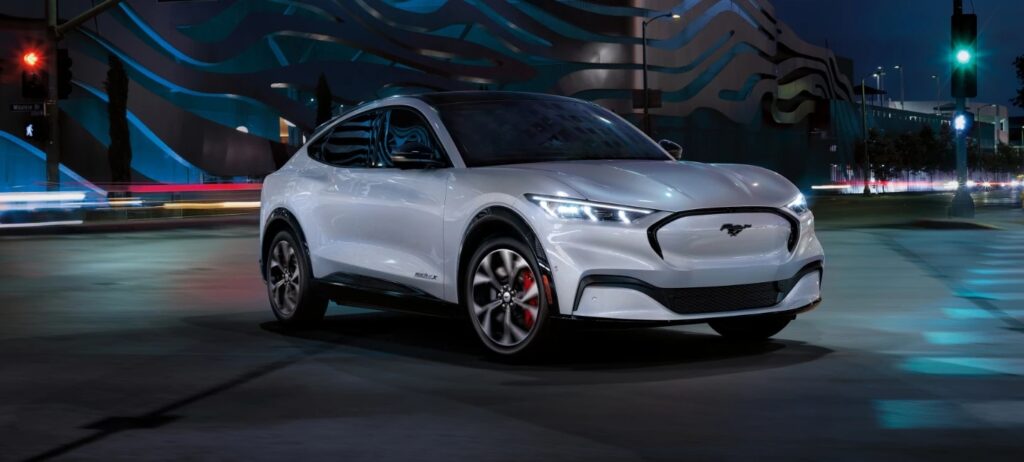In the electrifying world of electric vehicles (EVs), where governments champion a green future and consumers dream of cleaner rides, a stark reality is unfolding — a reality that Ford, the American automotive titan, is grappling with. The recent revelation is nothing short of a jolt: Ford is bleeding money, a staggering $36,000 for every electric vehicle it produces. Strap in; we’re about to navigate the twists and turns of this shocking financial revelation.
The Gulf Between Idealism and Reality
In the latest episode of the EV realist saga, the host sheds light on the ever-widening gap between the idealistic visions of governments and the harsh realism of the market. Governments globally are nudging consumers toward EVs with hefty subsidies, tax credits, and discounts. However, as we’ll soon discover, this financial lifeline is not only unsustainable but indicative of a market intervention to artificially prop up the appeal of EVs.

Ford’s Bleeding Balance Sheet
The headline screams financial distress: Ford hemorrhages a jaw-dropping US$36,000 for each electric vehicle it rolls off the assembly line. After enduring one of its largest financial losses on record, Ford’s electric car division is slashing spending earmarked for gearing up its factories to produce more battery-powered models. In a gut-wrenching quarterly earnings report, the division declared a US$1.3 billion loss in the July to September 2023 period.
Eye-Watering Losses and Production Cuts
The numbers are mind-boggling — US$36,000 loss per EV, a total loss of US$754.6 million for 20,961 electric cars sold in three months. Despite a 42.5% increase in sales of the Mustang Mark E, Ford finds itself unable to compete with Tesla’s price cuts, which the electric car giant wielded masterfully to keep demand high and factories humming. The losses extend beyond sales; they are also attributed to the hefty costs of electric vehicle development.

The Unholy Trifecta: Supply Chain Woes, Quality Checks, and Plummeting Sales
Ford points fingers at a trifecta of challenges: a beleaguered supply chain, the labyrinth of processing and delivering vehicles for quality checks post-restart, and, perhaps most damning, a sales dive. While the official narrative cites these challenges, a leaked memo to workers paints a more candid picture — weakening demand for electric pickups. The F-150 Lightning, touted as a game-changer, faces criticism for its impracticality, especially in commercial use.
Ford’s Strategic U-Turn: Postponed Investments and Production Cuts
In response to the financial onslaught, Ford announces a strategic U-turn — a postponed $12 billion spend on factory preparations for more electric cars. Despite this setback, Ford’s Chief Financial Officer, John Lawler, reassures that the company remains committed to investing in next-generation electric models. However, with the production cut, the financial turbulence raises questions about Ford’s ability to compete in the fiercely contested electric vehicle market.

Behind the Numbers: A Human Toll
Beyond the numbers and financial jargon lies a human toll. As Ford scales back on EV production, the ramifications are felt by thousands of families relying on Ford for their livelihoods. Job uncertainty looms large, and the dream of a green future collides with the harsh reality of financial turmoil.
What’s next? Navigating Stormy EV Waters
Ford’s financial woes in the electric vehicle sector paint a vivid picture of the stormy waters automakers navigate in the pursuit of an electric future. The clash between idealism and market realities, the challenges of supply chains, and the fierce competition underscore the complexities of steering toward a green horizon. Ford’s struggle should serve as a cautionary tale for the entire automotive industry — a reminder that the road to an electric future is fraught with financial turbulence.

Frequently Asked Questions (FAQs)
Why is Ford losing $36,000 on every electric car?
The financial loss is multifaceted, including high development costs, inability to match Tesla’s price cuts, and a weakening demand for electric pickups.
What led to Ford’s decision to cut planned investments in electric vehicle production?
Ford’s electric car division posted a significant financial loss, prompting the company to scale back spending on factory preparations for more electric cars.
How much did Ford’s electric car division lose in the July to September 2023 quarter?
The electric car division reported a staggering loss of $1.3 billion in the specified quarter, with losses per electric vehicle amounting to $36,000.
What factors contributed to Ford’s production cut for electric vehicles?
Ford cites a combination of challenges, including disruptions in the supply chain, delays in quality checks, and, notably, a sales dive.
Why is Ford struggling to compete with Tesla in the electric vehicle market?
Ford faces challenges in matching Tesla’s aggressive price cuts, a strategy employed by Tesla to stimulate demand and maintain high factory output.
How does Ford’s financial turmoil impact its commitment to electric vehicles?
Despite postponed investments and production cuts, Ford’s Chief Financial Officer asserts the company’s commitment to investing in the development of next-generation electric models.
What is the human toll of Ford’s scaled-back electric vehicle production?
The production cuts have implications for thousands of families relying on Ford for their livelihoods, raising concerns about job security.
What challenges does the F-150 Lightning face, as mentioned in the article?
The F-150 Lightning faces criticism for its impracticality, especially in commercial use, with concerns raised about charging and range issues.
How does Ford’s financial struggle impact its position in the electric vehicle market?
Ford’s financial challenges raise questions about its competitiveness in the electric vehicle market and its ability to navigate the complexities of the transition.
What does Ford’s situation teach the automotive industry about the transition to electric vehicles?
Ford’s struggle serves as a cautionary tale, highlighting the complexities and financial turbulence involved in the transition to electric vehicles, urging the industry to tread carefully.





